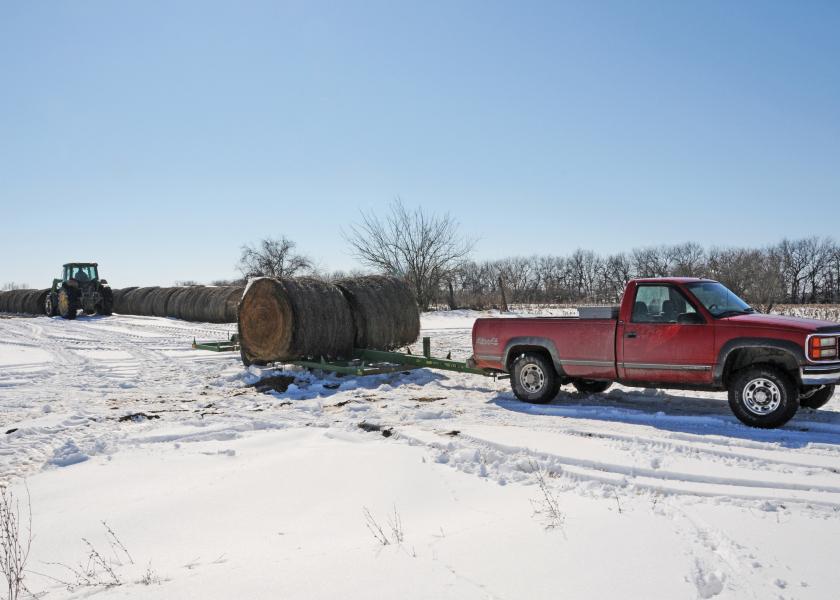Determine Your Winter Hay Needs

For many Midwestern cattlemen, winter delivered a dose of snow and cold well before Thanksgiving. That meant most cowmen started feeding hay earlier than expected. That begs the question, “Do you have enough hay?”
Calculate your per-cow daily hay needs by factoring in the size of the cow, its lactation status and the quality of the forage.
Quantity Versus Quality
Higher quality forages are fermented more rapidly in the rumen leaving a void the animal can refill with additional forage, says Glenn Selk, Oklahoma State University beef specialist emeritus.
“Consequently, forage intake increases,” he says. “For example, low quality forages (below about 6% crude protein) will be consumed at about 1.5% of body weight (on a dry-matter basis) per day. Higher quality grass hays (above 8% crude protein) may be consumed at about 2% of body weight.”
Higher quality forages such as alfalfa, silages or green pasture may be consumed at 2.5% of dry matter of body weight per day.
With large round bales, it’s necessary to determine both weight and quality of the hay, says Keith Martin, former Kansas State research and extension agent.
“Most modern round balers will make a bale that is between 9 lb. and 12 lb. of dry matter per cubic foot,” he says. Use these guidelines to estimate bale density:
- Bales that are loose and spongy when pressed will likely have a density of 9 lb. dry matter (DM) per cubic foot or less.
- Bales that deform slightly when pressed or spiked will likely have 10 lb. DM per cubic foot.
- Bales that are rigid but deform when pressed hard will likely have 11 lb. DM per cubic foot.
- Bales that only deform under the tractor’s weight will likely have 12 lb. DM per cubic foot.”
Daily Cow Diets
“Knowledge of average cow size in your herd as well as the average weight of your big round bales is necessary to predict hay needs and hay feeding strategies,” Selk says.
For example, he says, 1,200-lb. pregnant spring-calving cows will voluntarily consume 2% of their body weight or 24 lb. per day based on 100% dry matter. Grass hays are 7% to 10% moisture. If you assume the hay is 92% dry matter, then the cows will consume about 26 lb. per day on an as-fed basis.
After calving, the cow might weigh 100 lb. less, but will be able to consume about 2.6% of her body weight (100% dry matter) in hay.







